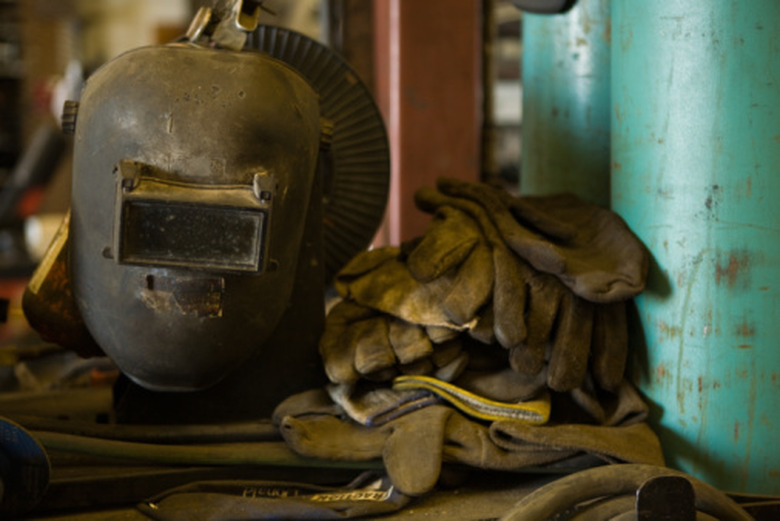How Many Types Of Welding Are There?
Metal welding is the process of permanently joining two pieces of metal or plastic together. Several methods of welding exist for different purposes. Most use extreme heat to melt the the two materials together. Some use alternative means such as solid-state welding on materials, which don't handle heat very well. Most welding processes are relatively new, developing during the industrial revolution and after the common usage of electricity.
Arc Welding
Arc Welding
This type of welding uses a welding power supply to create an electric arc between the welder's electrode and the metal being welded. The electric arc heats the metal to melting point. Arc welding is very popular for its low costs. Many types of arc welding exist, including shielded metal arc, MIG welding, flux-cored, tungsten inert gas and submerged arc welding. These are the most commonly used.
Energy Welding
Energy Welding
Energy welding, also known as laser or electron beam welding, is a very new process. This welding process is fast and is easy to automate, making it useful for high-speed manufacturing. Electron or laser beam welding make use of a highly focused laser or electron beam. Energy welding has a high start-up cost, which is the major drawback for this type of welding. It's also prone to thermal cracking, which occurs when the metal is later exposed to extreme temperature changes.
Gas Welding
Gas Welding
Gas welding, also known as oxyacetylene welding, is one of the oldest types of welding and used to be very common. Gas welding makes use of an open flame fed by acetylene gas through the welding torch. It is used for many industrial applications and is fairly cheap. Arc welding has replaced gas in popularity for industrial and manufacturing processes. One major drawback to gas is that it takes longer for the weld to cool.
Resistance Welding
Resistance Welding
Resistance welding, or spot welding, as it's sometimes called, involves the application of an electrical current between two pieces of metal. The current melts a very small section or spot of the two metals to the melting point, sealing them together. Resistance welding is less dangerous than gas or arc welding, and easier to use and automate for simple manufacturing processes. Resistance welding is limited in application and can really only join two overlapping pieces of metal together. Initial equipment costs are also high.
Solid State Welding
Solid State Welding
Solid-state welding is interesting because it joins two pieces of metal via pressure and vibration. No heat is used to melt the metals. Instead, the immense pressure and vibration causes the metals to exchange atoms via diffusion, joining the two pieces as one. Several types of solid-state welding exist, including ultrasonic, explosion welding, friction, roll welding, electromagnetic pulse, co-extrusion, cold welding, diffusion, exothermic, high -frequency welding, hot pressure and induction welding. Thorough preparation of the metal surface is required before solid-state welding can begin. The equipment is also rather expensive.
Forge Welding
Forge Welding
The oldest type of welding is the forge welding practiced by blacksmiths. In forge welding two pieces of low carbon steel are heated to 1,800 degrees Fahrenheit and hammered together. Forge welding is versatile and used in manufacturing a range of products. Unfortunately, this type of welding holds a number of drawbacks. It takes a long time to weld the metal. Only low carbon steel can be welded in this manner. The weld is sometimes compromised by the coal used in heating the furnace. Blacksmiths require a high level of skill to forge metal.
Cite This Article
MLA
Chandler, Faith. "How Many Types Of Welding Are There?" sciencing.com, https://www.sciencing.com/many-types-welding-there-8046145/. 24 April 2017.
APA
Chandler, Faith. (2017, April 24). How Many Types Of Welding Are There?. sciencing.com. Retrieved from https://www.sciencing.com/many-types-welding-there-8046145/
Chicago
Chandler, Faith. How Many Types Of Welding Are There? last modified March 24, 2022. https://www.sciencing.com/many-types-welding-there-8046145/
